When we woke on the third morning of our walk along the Heaphy Track, we were pleased to see that the storm from the previous day had blown itself out. As the clouds continued to burn off, we were able to appreciate the view from the hut perched high above the Heaphy River looking out to the ocean.

As with the previous days, as we embarked on the next twenty or so kilometers of track the vegetation once again changed. We were now walking through beech forests as we made our way down towards the Heaphy River.

Like most of the rivers in this part of the West Coast, the tannins in the water make them the colour of strongly brewed tea, although the water is still incredibly clear. The Heaphy Track was once surveyed for a road and so even as we descended towards the coast the gradient remained quite comfortable.

As we continued towards the ocean the vegetation slowly started to change again into a podocarp forest. These native forests consist of taller podocarp (hardwood) trees like rimu, kahikatea, miro, matai and totara and a dense undergrowth of shrubs, ferns and tree-ferns. We crossed a number of swing bridges, including the longest ever built by the Department of Conservation, almost 150 metres in length. Apart from the fun of crossing the gently swaying bridges, they allowed us a view of our surroundings, often the only time there was a break in the dense canopy.
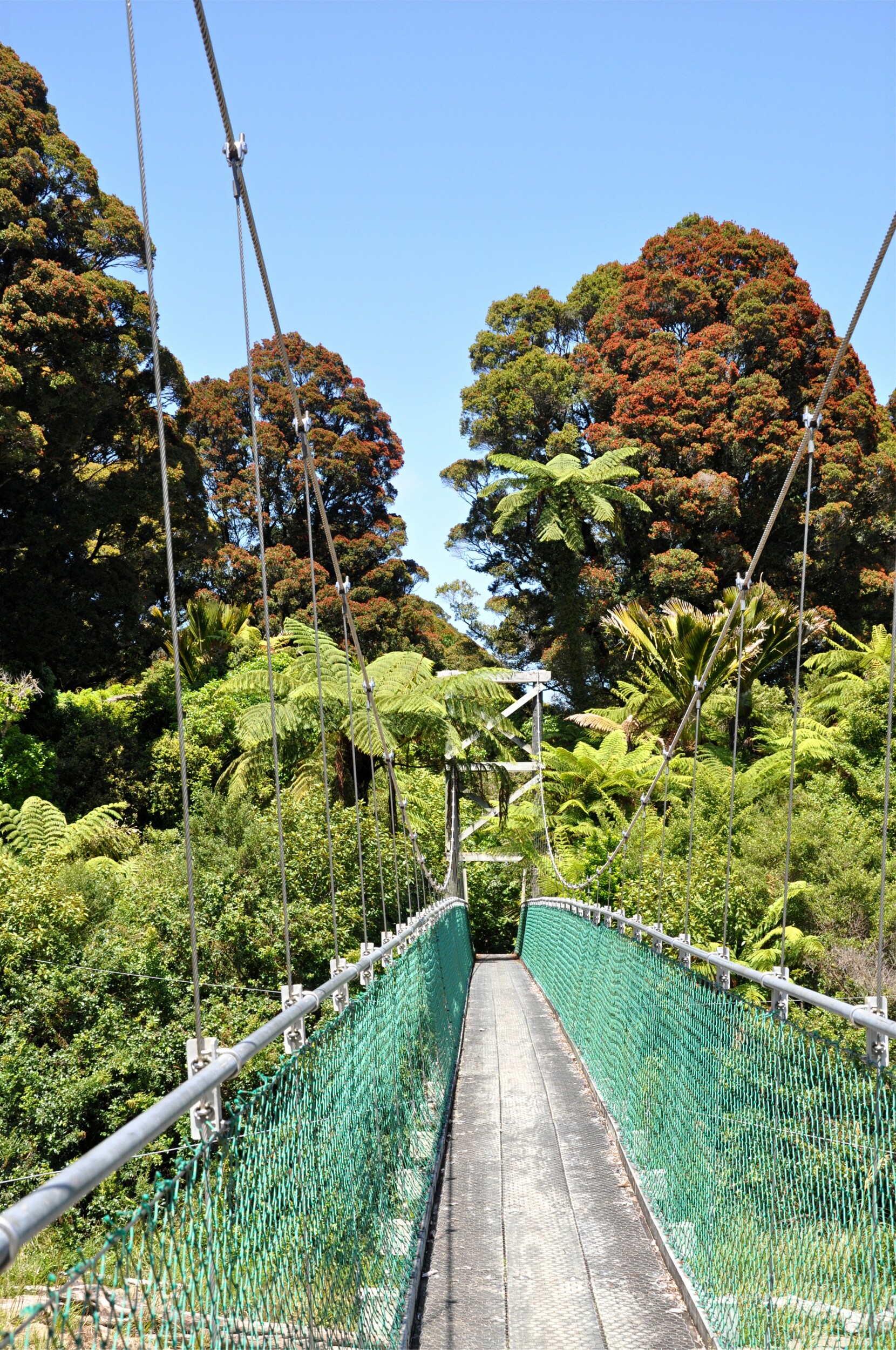
After passing the juction of the Lewis River, the forest started to change again and the first nikau palms appeared. With the summer sun beating down on us, and the tropical looking plants around us, we felt like we were walking in Singapore or somewhere far more exotic than New Zealand.
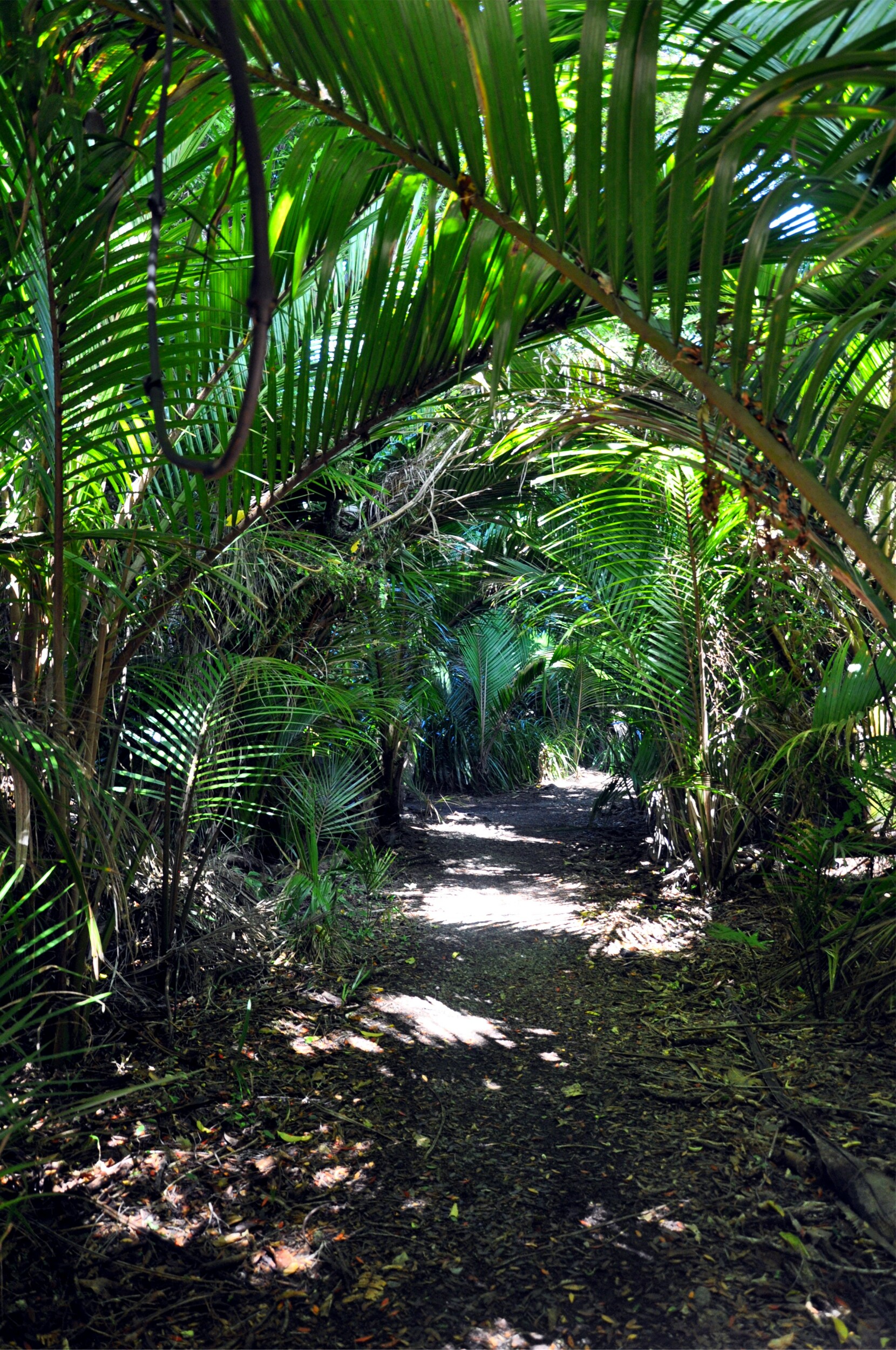
We were quickly reminded that we were in fact still in New Zealand when we passed a Weka at the side of the track. Unlike so many other native birds, it seems that they have managed to thrive, and indeed feel like they are becoming a bit of a nuisance. Rangers we met on the track mentioned that the Weka are eating some of the rare native carnivorous snails in the area. We also found that the Weka had no fear and were keen to try and sneak food or even trampers belongings that were left unattended outside some of the huts.

After continuing through the tropical feeling forest, we started to hear the crash of the ocean in the distance. We continued to follow the Heaphy River, and a break in the trees provided us with the welcome confirmation that were were almost at the hut, which we knew was situated near the mouth of the river.
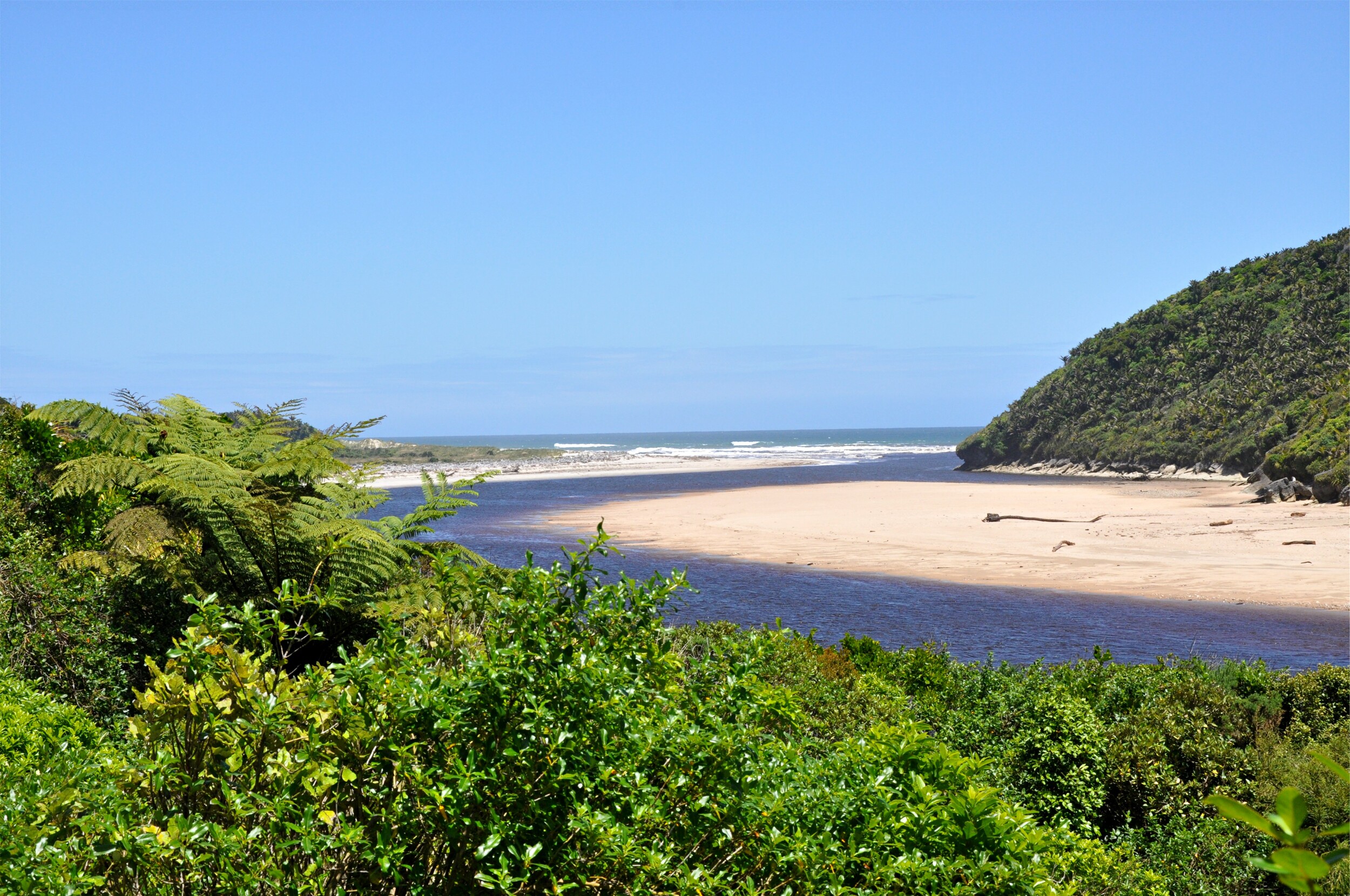
We arrived at the hut and after getting settled sat on the deck enjoying the view out to sea and watching the Weka and family of ducks as they pottered around the lawn outside the hut.
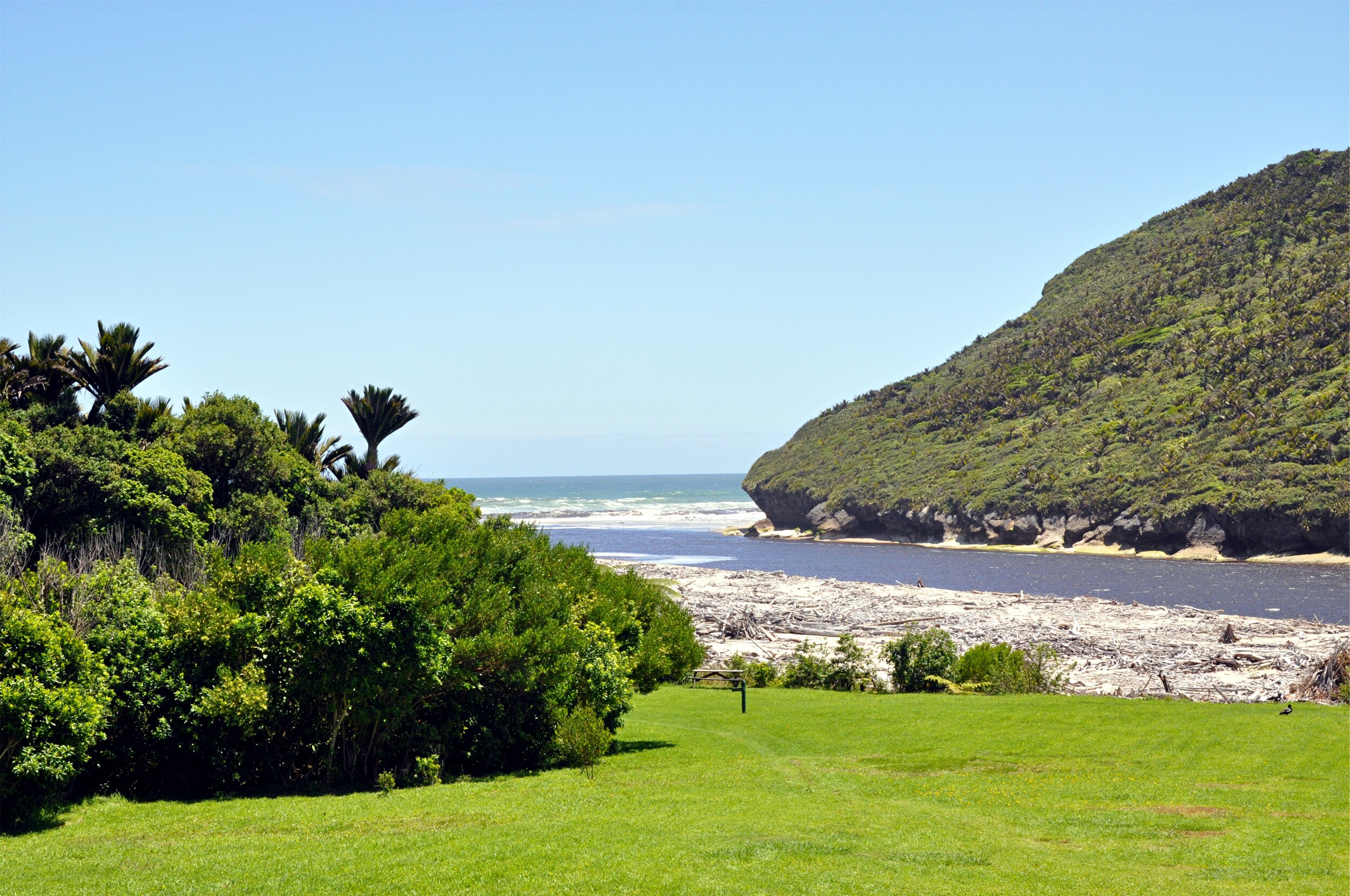
After lunch, we decided to head down to the beach, picking our way through the vast piles of drift wood that are a testament to how windswept this coast can often be. In the distance we could see the hills of Kahurangi National Park that we had been walking through, looking a lot more enticing than they had in the rain and fog the day before!
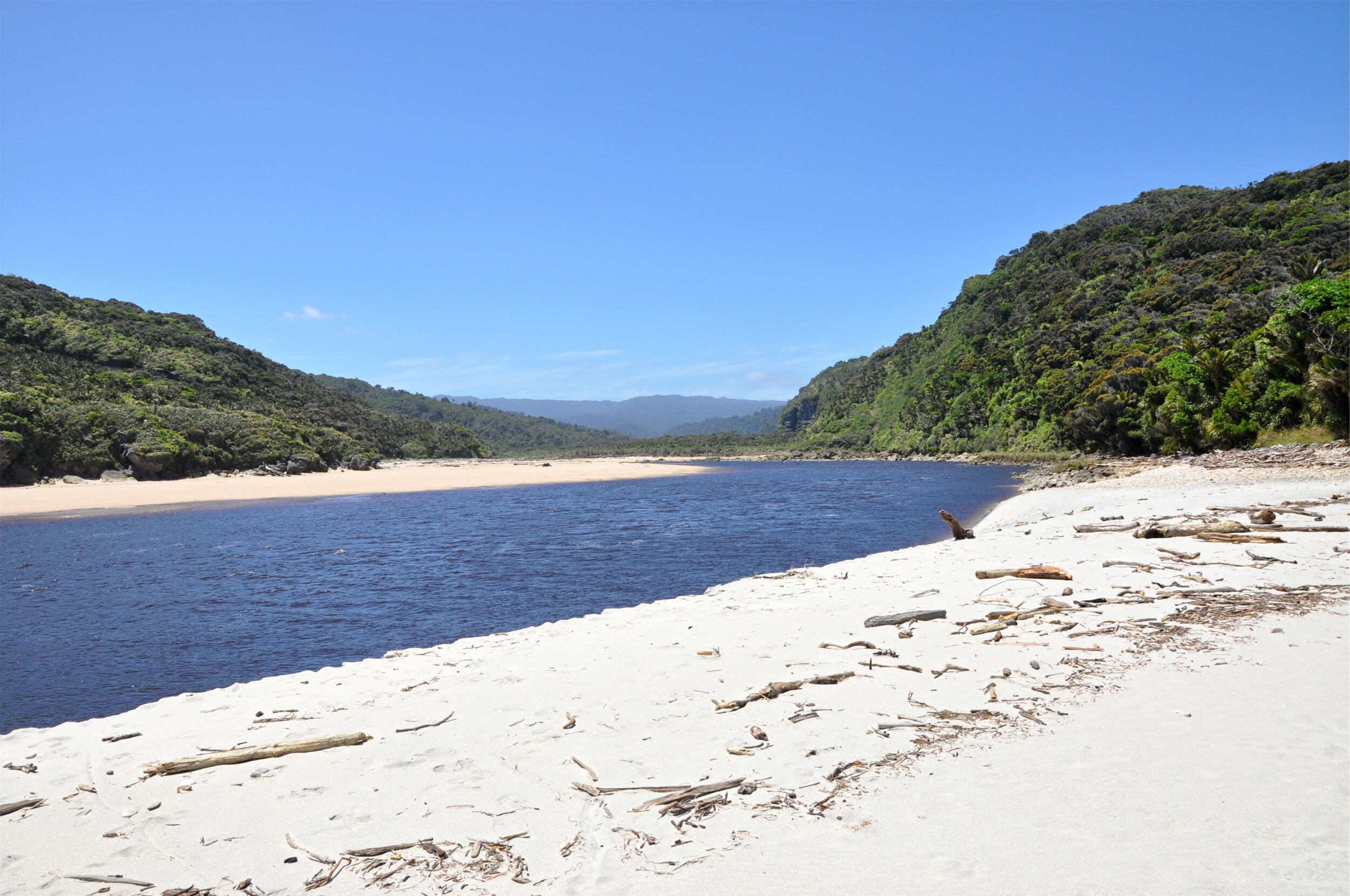
Not feeling brave enough to go for a dip in the river, and knowing that the currents here make the ocean off limits for swimming we continued around the point to the beach. Where we able to get just enough mobile phone signal to wish everyone back home a Happy Christmas!
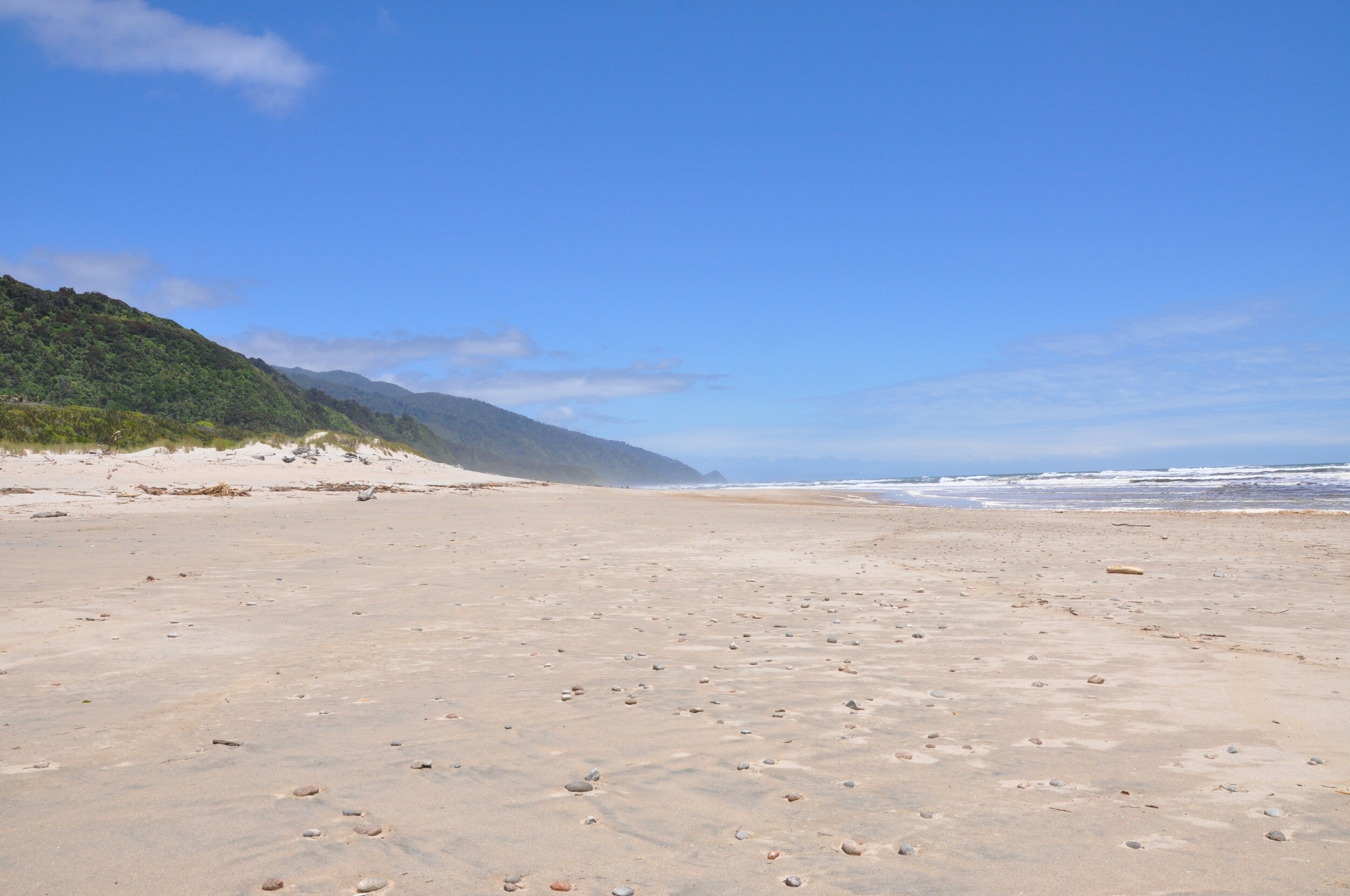
We spent our Christmas afternoon walking along the beach, the warm sunshine and just enough wind to keep the infamous West Coast sandflies at bay made for a very pleasant way to pass the time.
